Under the glow of floodlights on a warm Karachi evening, four players dart across a glass-walled court, rackets swinging, sneakers squeaking, laughter rising with every lob and smash. Outside the court, a group of friends cheer from sleek benches, iced lattes in hand. A couple sits courtside, watching their kids volley foam balls on a mini padel setup nearby, while waiters serve fresh sandwiches and grilled sliders from a pop-up café. The vibe is equal parts fitness, fun, and social hour.
This isn’t just a workout. It’s a scene.
Welcome to Pakistan’s newest sporting obsession: padel. A fusion of tennis and squash that’s as stylish as it is addictive, padel has exploded across Spain and the Gulf, and now, it’s quietly rewriting the rules of urban recreation here at home. But what’s turning heads isn’t just what happens on the court. It’s what’s happening around it.
Padel isn’t a solo sport. It’s a double-date, a family hangout, a mid-week escape. It’s the rare athletic activity where players and spectators both feel like part of the action, blurring the lines between game and gathering. And across Lahore, Islamabad, and Karachi, rooftop clubs, private fitness spaces, and gated community courts are popping up to meet the growing demand.
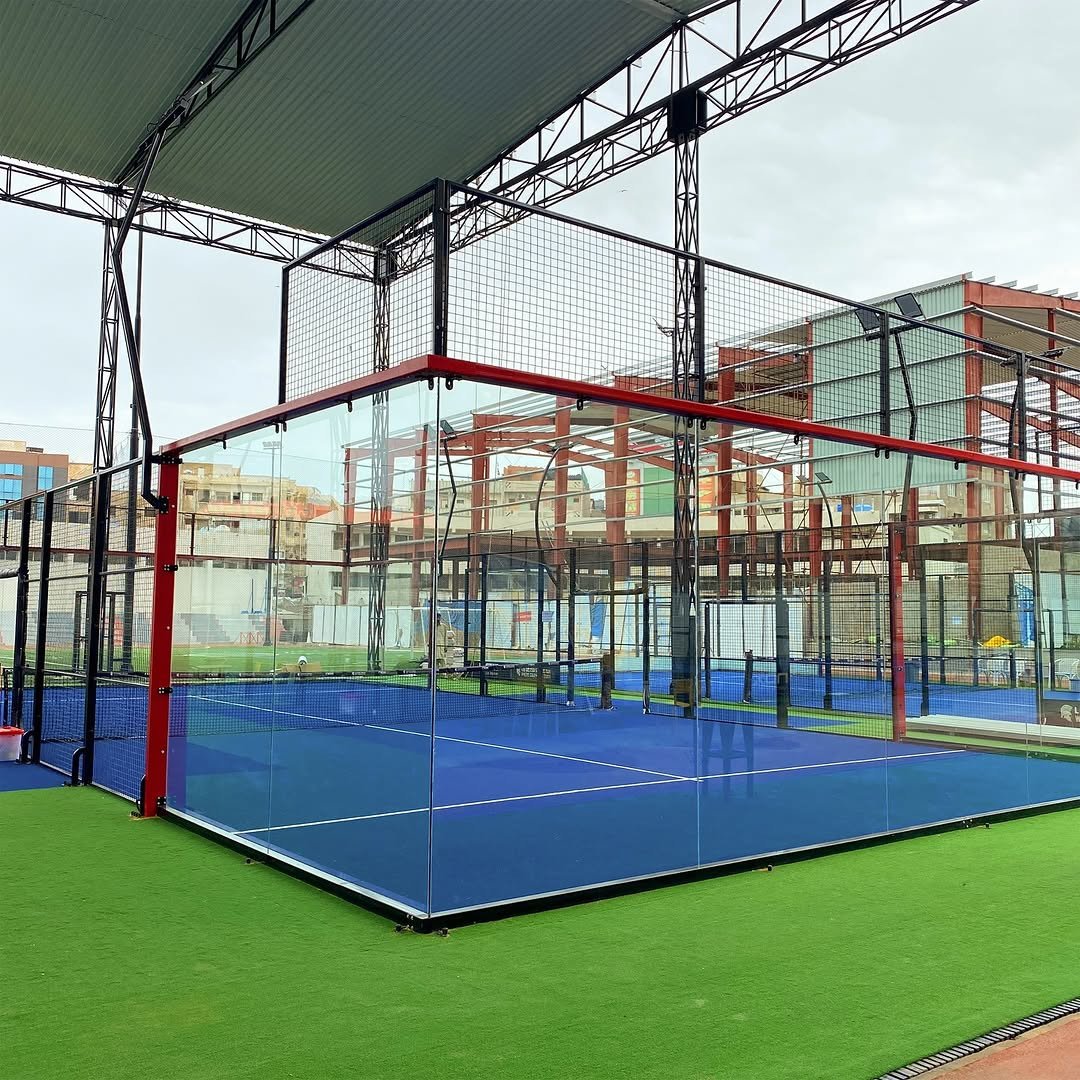
The unlikely journey of a glass-walled game
Like most good things, padel wasn’t planned, it was stumbled upon.
Back in 1969, a wealthy Mexican businessman named Enrique Corcuera wanted a tennis court at his home in Acapulco. Short on space and surrounded by walls, he improvised, laying down a smaller court with enclosed glass and mesh fencing. He added a lower net, tweaked the rules, and unknowingly created what would later become the fastest-growing sport in the world.
It wasn’t until the 1970s that padel made its way to Spain, where it quietly took root among the elite in Marbella. But the game’s charm, smaller courts, easier strokes, and a thrilling mix of tennis, squash, and doubles strategy, soon turned it into a national sensation. By the 2000s, Spain had more padel courts than tennis ones. Then came the boom in the Gulf, particularly the UAE and Saudi Arabia, where the sport was embraced not just as fitness but as a lifestyle experience.
Now, Pakistan is catching up.
Padel's entry here wasn’t a product of policy or federation planning, it arrived the way trends usually do: through people who saw it abroad and thought, why not here? For some, it started during business trips to Dubai or vacations in Spain. For others, it was seeing the sleek Instagram videos, athletes in sunglasses playing in chic, glass-encased courts with music pulsing in the background.
In Islamabad, the sport found a home first in exclusive clubs and diplomatic enclaves, where space and privacy weren’t an issue. Then came Lahore, with its fitness-savvy crowd and gated community culture. And now, Karachi, with its rooftop venues and coastal breeze, is hosting late-night matches that feel more like curated social events than sweaty workouts.
No national association governs it yet. There’s no playbook or formal infrastructure. But that’s part of the appeal. Padel in Pakistan is growing not because of institutional push, but because it’s just too fun, too fresh, and too socially magnetic to be ignored.
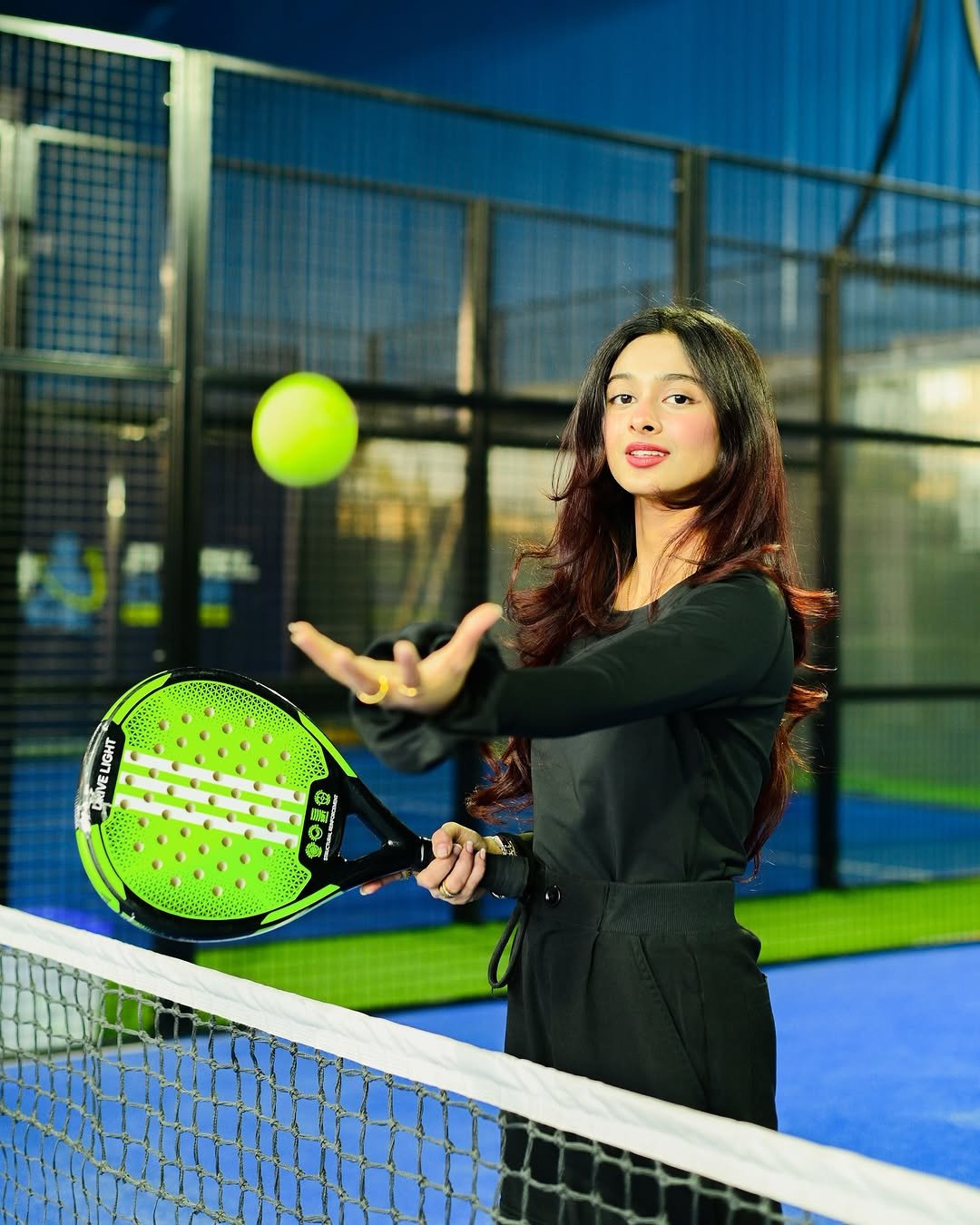

The social sport with a serious serve
If you want to understand why padel is making such a racket in Pakistan, head to Legends Arena in Karachi on a weeknight.
It’s 9 p.m. and the courts are fully booked. Music hums in the background, rackets clap crisply against low-bouncing balls, and the air buzzes with the energy of post-work matches. There’s no single type of player here. You’ll spot high schoolers locking into a rally with their coaches on one court, while a group of bankers, still half in office wear, power through doubles on another. Nearby, a national-level squash player is chatting casually with a fitness influencer, waiting for their slot to open up.
This isn’t just a game. It’s a lifestyle movement.
And at the center of it is Yousuf Ghaznavi, Director of Total Sports and one of the earliest proponents of padel in Pakistan. “We were inspired by padel’s explosive global growth and its unique blend of accessibility and excitement,” he says. “Our journey began with a vision to introduce a sport that brings communities together in an inclusive environment, where people can socialise, compete, and feel like they belong. Legends Arena was the launchpad, and today, it’s the epicenter of padel in Pakistan.”
In less than three years, Legends has gone from a two-court setup to the largest network of padel courts in the country, with five courts in Karachi and one each in Islamabad, Faisalabad, and Hyderabad. But it’s Karachi that continues to lead the charge. “This city has embraced padel like no other. Our courts are running 12 to 14 hours a day. We have professional players, yes, but just as many hobbyists: students, corporate executives, content creators, athletes from other sports. Padel is engaging people from all walks of life,” Ghaznavi explains.
And that’s part of the sport’s secret sauce.
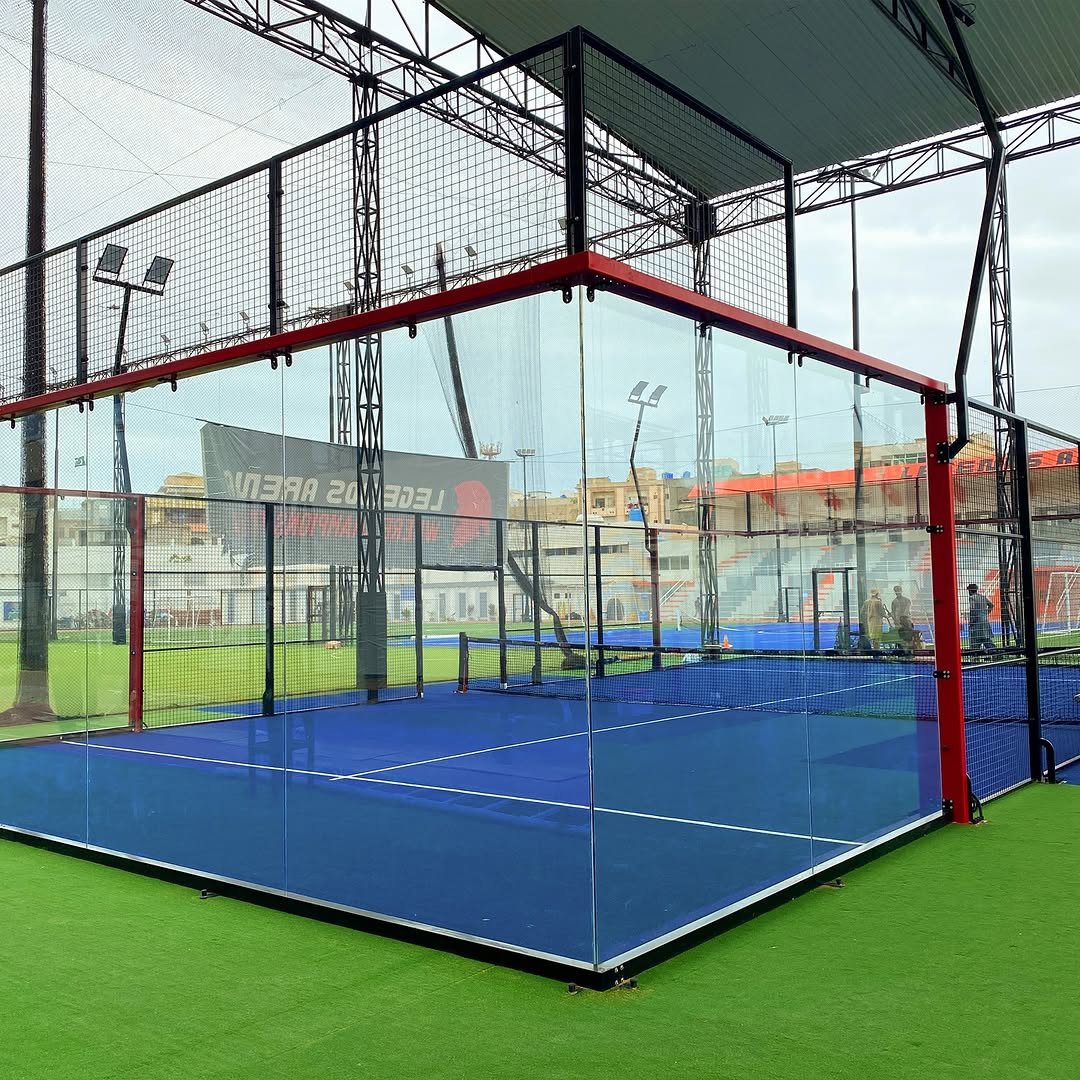
In a country where most sports tend to be either too elite or too inaccessible, padel has found a cultural sweet spot. It’s competitive, but doesn’t demand years of technical mastery. It’s physically engaging, but doesn’t leave you gasping for breath after five minutes. And, perhaps most importantly, it’s social.
“Padel is easier to learn than tennis and less physically demanding than squash, making it ideal for all ages and skill levels,” Ghaznavi says. “In a Pakistani context, its social nature resonates deeply. It’s competitive yet casual, perfect for our community-centric culture.”
It’s also a sport that invites you in. The enclosed court design keeps the ball in play longer, making rallies more exciting and less frustrating for beginners. You don’t need to be ultra-fit or highly trained to enjoy a good match. And since it’s always played in doubles, you’re never playing alone.
At Legends, that inclusivity shows in the faces and footwear of its players: teenage girls in pastel sneakers taking lessons next to forty-something executives in running shoes. “It’s the first sport I’ve played where I feel equally challenged and welcomed,” says Mehak Rafiq, a 32-year-old PR executive who picked up padel six months ago. “I’d tried gym, yoga, even tennis. But padel gives me this mix of energy, rhythm, and fun, and the people here actually cheer each other on.”
The community aspect is hard to miss. Legends regularly hosts themed tournaments, corporate leagues, and school-based competitions. It’s not unusual to see kids’ training sessions in the afternoon followed by mixed doubles tournaments in the evening. And once the matches are done, the game shifts courtside, into conversations, social media content, and even spontaneous dance sessions.
“People come here not just to play, but to connect,” Rafiq adds. “We’ve seen business deals closing courtside, friendships formed, even couples who met over matches. It’s more than just a sport, it’s a place people feel they belong.”
That sense of belonging doesn’t mean ignoring the business side. Setting up world-class padel courts, most of which are imported, isn’t cheap. And for now, court fees can feel out of reach for the average person. But Ghaznavi insists accessibility is a core part of the long-term vision.
“Quality infrastructure and international-standard courts come at a cost, yes” he admits. “But we’re mindful of accessibility. We regularly host school leagues, offer discounts and community events to ensure broader participation. As we scale, pricing will become more inclusive.”
That scaling, it turns out, is already well underway. Legends is actively expanding into new cities through its Legends Padel Edition brand. The team is also engaging with schools, local sponsors, and even international federations to explore future collaborations. But Ghaznavi is quick to point out that growth without culture means nothing.
“If we want padel to really take root in Pakistan, we have to grow it from the ground up,” he says. “That means bringing it to schools, colleges, public courts. We also believe that engaging more women and youth will be a game-changer.”
His vision reflects something deeper than just business ambition. It’s about creating a new kind of public space, one where fitness meets fun, where sport meets social fabric. And in a country where community is everything, that may be padel’s biggest strength.
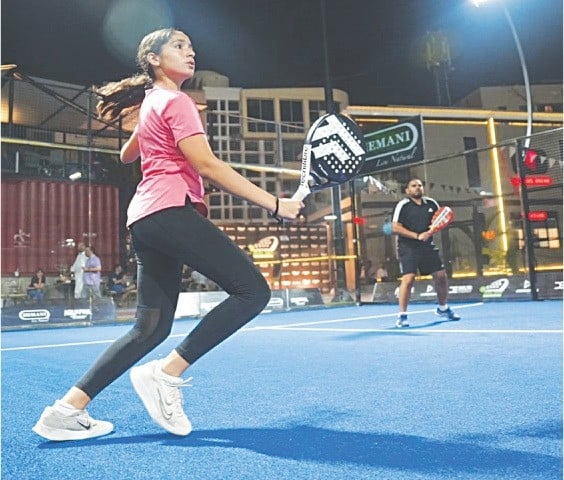
Who’s picking up the racket?
If you spend enough time courtside at a padel match in Karachi or Islamabad, you’ll notice something interesting. The sport isn’t just attracting ‘athletes’, it’s pulling in a whole new kind of player. The ones who maybe haven’t played anything since college. The ones who avoided tennis because it felt too serious, or skipped squash because it seemed too intense. The ones who didn’t think they’d fall in love with a racket sport in their 30s.
But padel is different.
“I never thought I’d be this into a sport,” says Taimur Khalid, a 29-year-old product manager who plays three times a week at Legends. “I used to go to the gym out of guilt. But with padel, I look forward to it. You play, you sweat, you laugh, and you go grab a juice after. It doesn’t feel like a chore.”
For many players like Taimur, padel has replaced not just their evening workout, but their entire social routine. A lot of them don't even consider themselves ‘sports people.’ And yet, they find themselves scheduling games during lunch breaks, weekends, even before office hours. It’s part fitness, part fun, and fully addictive.
And it’s not just men.
The courts are increasingly filled with women, from university students to working professionals, holding their own in doubles matches and pushing to make padel more inclusive. Aiman Rehman, 26, started playing casually with her brother during the pandemic. Now, she leads a weekend padel group for women at a local club in Lahore.
“It’s the first sport I didn’t feel intimidated by,” she says. “You don’t need to be super fit or perfect. You just need a partner and the will to show up. Once you’re in, you realise how empowering it feels to take up space on court.”
The social nature of padel is a huge part of what’s helping break barriers. Because it’s always played in pairs, the pressure of solo performance fades. It becomes more about connection than domination. A friendly match turns into a ritual. A shared laugh at a missed shot leads to a new friendship. Some players even call it their “therapy session with movement.”
That effortless blend of competition and camaraderie has also made padel a hit among content creators and influencers, who are increasingly showing up with cameras in one hand and rackets in the other. Instagram is full of reels of slow-motion smashes, courtside selfies, and matchday banter. But what’s surprising is that even the most curated players are also... really playing.
“It’s not just for the ‘Gram,” laughs Ariba Saeed, a lifestyle blogger from Karachi. “I genuinely love the game. I get DMs all the time asking, ‘Where is this court? Can I try?’ And I always say yes. That’s the best part, how welcoming it is.”
That organic buzz has made padel one of the few sports in Pakistan where word-of-mouth is doing the heavy lifting. No big ad campaigns. No government push. Just people inviting people, post by post, match by match.
And that’s what makes it feel less like a trend, and more like a community in motion.
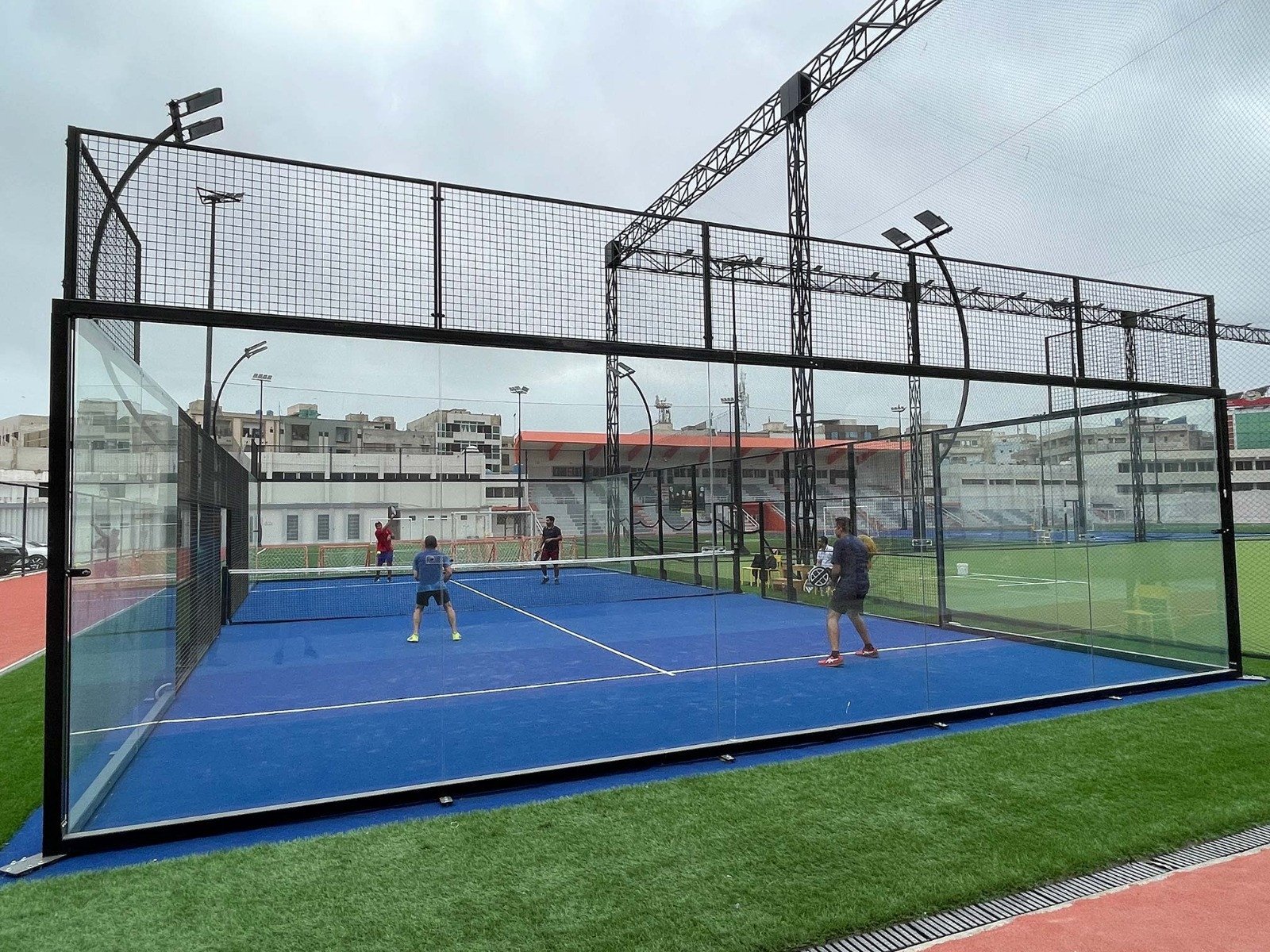
Building the game
Behind every smash on the padel court is an even bigger swing off it, one made by the people building the courts, growing the ecosystem, and betting on its long-term promise.
Padel isn’t like other casual sports that can be squeezed into any park or school gym. It requires purpose-built courts, enclosed with glass, equipped with professional turf, net systems, drainage, and night lighting. And nearly all of it is imported, from flooring to fencing. That means starting a padel facility isn’t just a passion project, it’s a serious investment.
But for Yousuf Ghaznavi, that investment is already proving its worth. “This is absolutely a sustainable business,” he says. “We’ve already expanded from two to nine courts at Legends Arena, and launched in multiple cities through our brand Legends Padel Edition, which is now present in Islamabad, Faisalabad, and Hyderabad, with more cities on the roadmap. We believe padel is here to stay, and we’re building the infrastructure and community to support long-term growth.”
The demand is backing that vision. With courts in Karachi booked well into the night and increasing interest from schools, corporate leagues, and fitness clubs, padel is no longer an experiment, it’s quickly becoming a fixture. According to insiders, the initial barrier of cost is being overcome by volume. People are not just showing up, they’re returning, bringing friends, and forming routines around the game.
There’s also growing interest from developers and commercial spaces, who see padel courts as more than just amenities, they’re experiences that drive foot traffic, community interaction, and even brand association. “It’s now common to see padel clubs integrated into residential projects or rooftop malls,” says an industry consultant involved with a Lahore-based real estate firm. “It creates a whole lifestyle narrative.”
That narrative has also made padel attractive for sponsors. Sportswear brands, health food startups, and wellness platforms are eyeing padel not just as a sport to back, but as a community to plug into. It's a space where brand placements are natural and where audiences are already in the mindset for fitness, fun, and aspiration.
Still, growth brings responsibility. With the expansion of courts comes the need for trained coaches, standardised facilities, and eventually, governance. Right now, most clubs operate independently, each with their own training schedules, events, and pricing. But as the sport scales, there’s a rising call for a more unified structure, something that could pave the way for national leagues or even international participation.
For now, though, the energy is on the ground, where business meets purpose, and infrastructure is being built not just for profit, but for play.
From weekend thrill to national sport?
The momentum is real, but what comes next?
For now, padel in Pakistan lives mostly in the cities, in curated environments with premium courts, well-lit spaces, and a crowd that can afford the lifestyle that surrounds it. But those closest to the game believe this is just the beginning.
There’s already talk of forming a national federation, standardizing coaching, and eventually hosting inter-city tournaments. Some clubs are building partnerships with schools and colleges. Others are exploring sponsorships for underrepresented groups, especially women and youth, to break the perception that padel is only for a certain class or demographic.
The challenge, as always, will be to balance the sport’s premium appeal with broader accessibility. Will it stay an urban trend, or evolve into something more inclusive? Will we see padel courts in public parks? School leagues? Maybe even a national team one day?
And maybe that’s the real future of padel in Pakistan, not just as a game, but as a culture of connection. The court may be small, but the impact? That’s only getting bigger.
